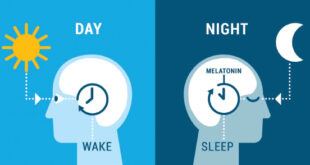 Heart disease and stroke are the #1 and #4 causes of death in America respectively. One can cut his/her risk of developing both of these conditions dramatically simply by exercising regularly. Your heart is a muscle, and the more you exercise it, the stronger it becomes, and the less likely you are to develop heart disease.
Heart disease and stroke are the #1 and #4 causes of death in America respectively. One can cut his/her risk of developing both of these conditions dramatically simply by exercising regularly. Your heart is a muscle, and the more you exercise it, the stronger it becomes, and the less likely you are to develop heart disease.
Becoming more active doesn’t mean becoming a marathon runner overnight
The American Heart Association recommends that you exercise 30 minutes per day, five days a week. But they also understand that you shouldn’t just dive into exercising too much, too soon. If you have not been exercising, start by seeing your doctor to determine what kind of shape you are in right now, and then setting a series of exercise goals that fit with your disposition. The most difficult step is next; beginning and continuing the exercise program that you developed under your doctor’s guidance.
What type of exercise is best for my heart?
There are countless options available regarding exercise depending on your personal preferences. If you prefer the outdoors and exercising alone, running might be a good choice; if you prefer the gym and working out with others, cardio classes might be better for you. In general, however, heart doctors suggest that you follow an exercise program that includes three important types of exercise:
• Aerobic exercise can consist of briskly walking, jogging, running, biking, swimming, or any type of exercise that raises your heart rate and keeps it high. As a general guideline, while performing the exercise you should be breathing harder than normal, but still be able to talk to someone.
• Follow your aerobic exercise with a period of stretching to loosen up your muscles and increase overall flexibility.
• Finally, don’t skimp on strength training, which you should perform 2-3 times per week, resting for a day between sessions. Several studies have shown a strong correlation between muscle strength and heart health -literally, the better you perform on standard strength tests, the healthier your heart is.
First, as we have suggested above, check in with your personal physician before starting any new exercise program, and with your cardiologist if you have been diagnosed with heart problems in the past. Whatever your chosen exercise routine, start out slowly and work up to goals that you set with your doctors. Always stop exercising if you feel faint, dizzy, lightheaded, or have chest pains.
Be aware of your limitations and respect them. If you want to become a runner, start with brisk walking and add 1-2 minutes of running to each five minutes of walking, and very soon you’ll find that you can run the entire time. If running is too hard on your shins, consider swimming or water fitness classes, which provide a tremendous aerobic workout without the physical impact of running.
Exercise tips and precautions
Once you are more in shape, interval training- alternating short bursts of high-intensity exercise with slightly longer periods of active recovery – has been shown to be unrivaled in improving heart health, providing three times the benefit of sustained cardio exercising. Diversity of exercise can be very helpful for compliance and balance. For example, low impact forms of exercise such as yoga, Pilates, or Tai Chi, may lower blood pressure, improve circulation, while adding to one’s spiritual balance.
The important thing is to start exercising, and then continue. Do not try to evaluate your performance by anyone else’s standards. It is most important to find your own pace and work to increase it each time you exercise. The real value of your exercise program is not measured in how long or how fast you can run, but in how healthy your heart is during your next visit to the cardiologist.
To schedule a consultation call (561) 420-0409
Check Also
WHAT IS MY CIRCADIAN RHYTHM AND WHY DOES IT MAKE ME FEEL SO “OFF”
By Renee Chillcott, LMHC Have you heard terms such as “biological clock” or “biorhythms”, or …
 South Florida Health and Wellness Magazine Health and Wellness Articles
South Florida Health and Wellness Magazine Health and Wellness Articles




